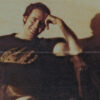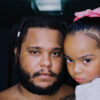“It’s a little bit of an out-of-body experience,” says Tracy Droz Tragos, the morning after the premiere of her latest film, “Abortion: Stories Women Tell.”
The “Rich Hill” co-director had been nervous, inviting three women each who appear in the film representing a pro-life and pro-choice point of view, and was relieved that following a respectful Q & A, everyone came to the afterparty. For all the women involved, it was a chance to breathe in the midst of the most heated battle over abortion rights in a generation, a debate that Tragos hopes to bring nuance and reason to with a mosaic-like survey of women from her home state of Missouri. Revolving around the Hope Clinic, which straddles the border of the Show Me State, residing just north in Granite City, Illinois, the filmmaker follows a number of women who drive for days to get the procedure as well as ones who have had it or can ill afford to despite ample cause, resulting in a humanizing yet apolitical look at an issue that so many have an opinion on, yet too few understand fully in terms of how it’s actually practiced.
After capturing the inner lives of a trio of young men slowly strangled by their rural surroundings in “Rich Hill,” Tragos offers up similarly revelatory glimpses of the women it trains a camera on, allowing the power of their testimony to speak for itself, whether it’s Amie, a single mother who works 70-90 hours a week who struggles to make the 130-trip to the Hope Clinic, especially in light of Missouri’s recently instituted 72-hour waiting period between registration and procedure, Sarah, a young woman who faced a particularly difficult choice upon learning her baby would have no arms due to a rare genetic disorder, or Dr. Erin, the physician at the Hope Clinic who grapples with hearing these stories on a daily basis as she prepares for a child of her own. Filmed in an impressionistic style that allows so many to share their stories and underlines the notion that these experiences are connected even if they’re at odds with each other, “Abortion: Stories Women Tell” allows the voice of its participants to rise above the din with the aim of carrying a conversation well beyond its running time.
Scheduled to air on HBO later this year, Tragos spoke shortly after the film’s big screen debut at the Tribeca Film Festival, describing how she was able to tackle such tough subject matter both in size and content, as well as how politics did intrude on her production and giving a platform to those who aren’t normally heard from.

I might as well have an address there at this point, but no, I live with my family now in Los Angeles. I grew up there for the early part of my life and spent a lot of time there because my grandparents live there and they were like surrogate parents for me. Wanting to make a film about such a big topic, it’s not necessarily easy [to figure out] how do you focus it and focus it quickly because it can just be sprawling. Missouri made sense [because] if I can find a way to bring it back to what I know, and it also happens to be one of the states that is the most restrictive in the country. When I started filming, we were on the eve of passing this 72-hour waiting period, so it made sense for me to be there.
How did the Hope Clinic come to be the one that you focused on?
The way these things happen are somewhat organic and one person talks to another. There is some measure of mistrust in general if it’s a complete outsider, and because of my Missouri connections, there are a few people I know who could vouch for me. I got to Dr. Erin first and there had been journalists who they’ve had at that clinic before, so she thought it would be okay for me to come. It just went from there. Access was certainly hard with this film. It’s not an easy thing to ask of women or caregivers.
Amie seems to be the one that you hang the skeleton of the film on – how did she become such a central figure?
We met her when she was [at the clinic] to receive her medical abortion, when she got her prescription. But because of the way that happens we were able to go back with her before she took her pills, and then come back three weeks later when she had her follow-up, so she was someone whose story we could tell as it was unfolding, [like an] emotional roller coaster, which it can sometimes be.
[The structure] was exceedingly difficult to figure out. Honestly, there’s no narrative structure and we did feel like there was going to be a cumulative effect by telling the story of many women. But how do you make that logical? And how is it you’re not just telling one story, then another story and then another? There was a little bit of wanting to construct a narrative reason to watch with some of the recurring characters, the Hope Clinic as our grounding device and the women who work there.I may have read too much into this, but because a number of the women are shown alone when they talk, it was striking when you allow someone else into the frame, whether it was Janet’s mother or Chelsea’s husband. Was that actually intentional?
This is such a personal private matter and that was the context that women wanted to share their story with us, that for the most part, especially if it’s a retrospective story, it was almost dictated by them more than what I was intending to do. It really was about how they wanted to tell their story. In the case of Chelsea, whose husband who came home [during that interview], she really wanted him to speak from his perspective, and I thought that was great and it’s important to hear that voice as well, but it was through her invitation. It was the same with Janet, who placed her child for adoption.
Did you keep a minimal crew?
It was pretty minimal, but “Rich Hill” was too. In general, I like to keep a small footprint. I think the bigger the crew, the more it becomes about the production than what you’re there to capture. That’s always important for me when I approach something, because I’m not really interested in, you know, “get the lights” and “would you do that again one more time please?” It’s more about bearing witness to what’s happening rather than changing it.
Was this difficult to take in, hearing these stories day after day?
There were good days and bad. The community of women at the Hope Clinic is such a comforting wonderful place, those women could lift spirits. But then some of the circumstances of women are really devastating. For me, I’ve always had access to health care that I needed and it was devastating to see the effect of how disenfranchised women are. I’d love to wave a magic wand and have that not be what’s happening, but it is.
How many women did you actually end up talking to?
It was hard to know what was the sweet number of stories that this film could hold and not everyone was telling an abortion story. Some were working as advocates or caregivers, so I spoke to nearly 80 women throughout the making of this film, which is a lot. We wanted to hold all of them and we certainly hope with this film’s roll-out, more stories can gather around this film and women will come forward.
Since the ground was shifting beneath your feet on this issue as you were making the film, did what was going on in the outside world affect the end result?
It was certainly affected by that. Once the 72-hour waiting period came down, then there was the undercover video thing that happened – we were going to spend time in the one Planned Parenthood in Missouri as well – but it was very, very hard. They were very nervous, and rightly so, allowing cameras in around that [point in time]. They were mostly concerned about patients and how they would feel, so things changed as laws were passing and the assault on reproductive rights was happening.
Somebody says in the film that the reason they’re participating it in is because it’s going to keep places like the Hope Clinic open. Did you actually feel the weight of that as you were making this?
When I approach a film, I like to imagine that it will have that kind of impact, but it’s hard to take that all on my shoulders. If I think too big like that, I might never get anywhere, but I certainly hope it will have that effect. The audience last night [at the Tribeca premiere], one of the last questions was how to support places like Hope, so it might have that effect, which would be great.
Was there anything during filming that surprised you and led you in a different direction than you thought this film would take initially?
It was important that people talk about options and to meet with women who chose other options than abortion and to hear their stories as well. The thing I really took away is that an unplanned pregnancy can be a real crossroads for people and to not be able to be a self-advocate and to actually determine your destiny when you’re at that crossroads is pretty devastating. So it took a while to get over meeting Teandra, in particular [because] here was a women who would’ve had an abortion had she had access to that or then would have placed her child for adoption if she had access to that. Neither of those options were open to her, so she lost her basketball scholarship and went to live in public housing. Everything stopped when that happened. Who knows where her life will take her from here? But it’s pretty startling to meet women who have been so disenfranchised because they can’t access the care that they need and want.
In speaking with women on both sides of the issue, did you find any common ground?
What I’ve really come away with is the black and white way of looking at this is pretty reductive and not terribly useful. There were many women who were working in the pro-life movement who had had abortions – not just one but multiple abortions – and that was their choice when they wanted to do that and now they were choosing to do this, and there were women who were staunchly pro-choice, some who had never had abortions, some who had had abortions and had wanted to share their complicated stories of both relief and being grateful that they’d had that opportunity and maybe having some nostalgia about the experience or even some sense of sadness of never having been able to tell their story. It had been unresolved for them because they had been so shamed and stigmatized, so it’s very gray. But at the end of the day, because of the different circumstances, medical conditions and lives that women have, it just became so clear that it’s not something that you can easily pass a law around and restrict. It’s very, very much a private individual matter.
“Abortion: Stories Women Tell” will get a theatrical release this summer, followed by a premiere on HBO later this year.




